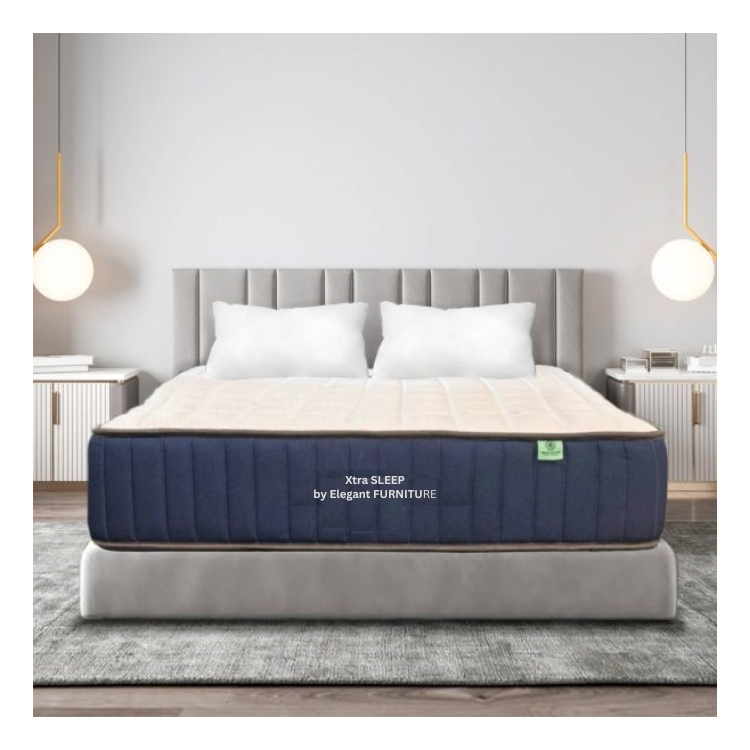The Ultimate Guide to Choosing the Best Mattress for You
Choosing the right mattress can be a game-changer for your sleep quality and overall well-being. With countless options available, making the right choice might feel overwhelming. This guide will help you navigate the world of mattresses, ensuring you find the perfect match for your sleep needs.
1. Understand Your Sleep Needs
Before diving into mattress types, it’s essential to understand your unique sleep needs. Consider the following:
- Sleep Position: Do you sleep on your back, side, or stomach? Each position requires different support levels to maintain spinal alignment.
- Body Type: Your weight and body type can influence the type of mattress that provides optimal support and comfort.
- Health Concerns: If you have conditions like back pain, arthritis, or sleep apnea, certain mattresses can help alleviate symptoms.
2. Types of Mattresses
Here’s a breakdown of the most common mattress types and their benefits:
Innerspring Mattresses
- Construction: Coils provide support with a layer of padding on top.
- Pros: Good for back support, widely available, usually more affordable.
- Cons: Can be noisy, may wear out faster, limited motion isolation.
Memory Foam Mattresses
- Construction: Layers of memory foam that contour to your body.
- Pros: Excellent motion isolation, great for pressure relief, hypoallergenic.
- Cons: Can retain heat, may feel too soft for some, off-gassing smell when new.
Latex Mattresses
- Construction: Made from natural or synthetic latex.
- Pros: Durable, responsive, cooler than memory foam, eco-friendly options available.
- Cons: Can be expensive, heavy, limited availability.
Hybrid Mattresses
- Construction: Combines innerspring coils with foam or latex layers.
- Pros: Balanced support and comfort, good airflow, durable.
- Cons: Can be pricey, heavy, might have off-gassing.
Adjustable Air Mattresses
- Construction: Air chambers that can be adjusted for firmness.
- Pros: Customizable firmness, great for couples with different preferences.
- Cons: Expensive, potential for mechanical issues, noise from the pump.
3. Firmness Levels
Mattress firmness is often rated on a scale from 1 to 10:
- Soft (1-3): Best for side sleepers and those who need pressure relief.
- Medium (4-6): Good for back sleepers and combination sleepers.
- Firm (7-10): Ideal for stomach sleepers and those who need extra support.
4. Considerations for Special Needs
- Hot Sleepers: Look for mattresses with cooling technology, such as gel-infused memory foam or breathable latex.
- Couples: Motion isolation is crucial to avoid disturbances from a partner's movements. Memory foam and hybrid mattresses are great options.
- Eco-Conscious Shoppers: Choose organic or natural materials like organic cotton, wool, and natural latex.
5. Budget and Warranty
- Budget: Mattresses range from a few hundred to several thousand dollars. Determine your budget before shopping.
- Warranty: A good warranty can protect your investment. Look for warranties that cover at least 10 years.
6. Testing and Research
- In-Store Testing: Spend at least 10-15 minutes lying on each mattress in your typical sleep position.
- Online Research: Read reviews and ratings from other customers. Look for transparency in materials and construction.
- Trial Periods: Many companies offer trial periods, allowing you to test the mattress at home for several months.
Conclusion
Investing in the right mattress is crucial for your health and well-being. By understanding your sleep needs, researching different types of mattresses, and considering factors like firmness, special needs, and budget, you can find the perfect mattress to ensure restful nights and energetic days. Happy sleeping!

